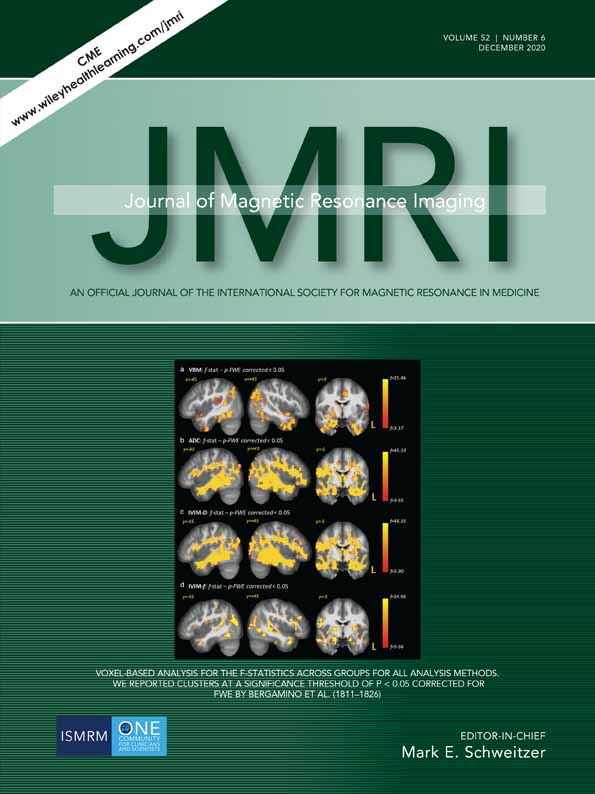Prediction Model for Intermediate-Stage Hepatocellular Carcinoma Response to Transarterial Chemoembolization
The first two authors contributed equally to this work.
Abstract
Background
The outcome of intermediate-stage hepatocellular carcinoma (HCC) treated with transarterial chemoembolization (TACE) is greatly heterogeneous. Current means for predicting HCC response to TACE are lacking.
Purpose
To investigate whether the combination of parameters derived from amide proton transfer (APT) and intravoxel incoherent motion (IVIM) imaging, and morphological characteristics of tumor can establish a better prediction model than the univariant model for HCC response to TACE.
Study Type
Prospective.
Subjects
56 patients with intermediate-stage HCC (50 males and six females).
Field Strength/Sequences
3.0T; T2-weighted-fast spin echo, 3D liver acquisition with volume flex, single-shot fast spin echo-planar imaging (EPI), spin echo-EPI.
Assessment
Pretreatment APT signal intensities (SIs), apparent diffusion coefficient (ADC), true molecular diffusion coefficient (D), pseudodiffusion coefficient (D*), and perfusion fraction (f) for tumor, peritumoral, and normal tissues were measured. Follow-up MRI scanning was performed, and the patients were classified as responders or nonresponders based on the modified Response Evaluation Criteria in Solid Tumors (mRECIST) criteria.
Statistical Tests
The imaging parameters were compared among the three tissues and between the two groups using analysis of variance (ANOVA) or two-sample t-test. The prediction model's variables were derived from univariate and multivariate logistic regression analyses. Receiver operating characteristic (ROC) curve analysis was used to explore the predictive performance.
Results
Based on the logistic regression analysis results, we established a prediction model that integrated the APT SI and D values in the tumor tissue and the tumor size. ROC analyses revealed that the model was better able to predict tumor response to TACE (area under the ROC curve = 0.851) than the individual parameters on their own.
Data Conclusion
A prediction model incorporating pretreatment APT SI, D in the tumor tissue and tumor size may be useful for predicting the response of intermediate-stage HCC to TACE.
Level of Evidence
1
Technical Efficacy
Stage 1 J. MAGN. RESON. IMAGING 2020;52:1657–1667.




